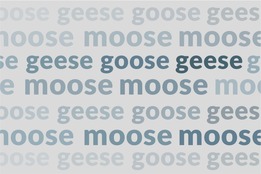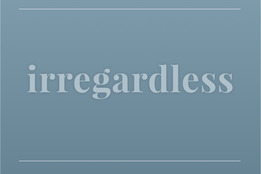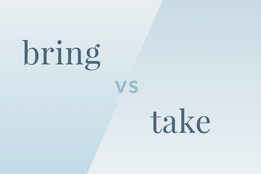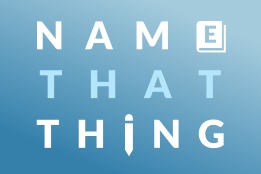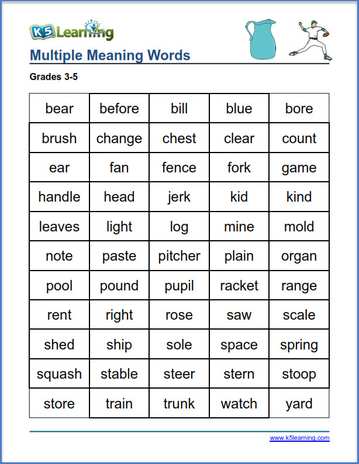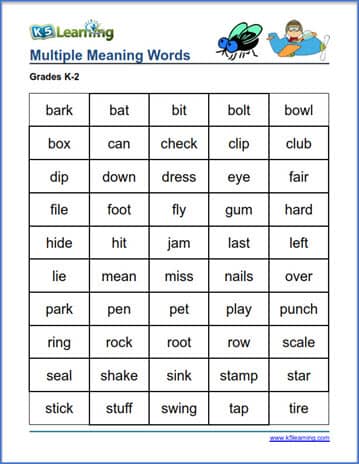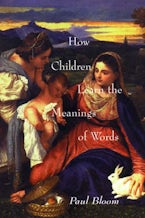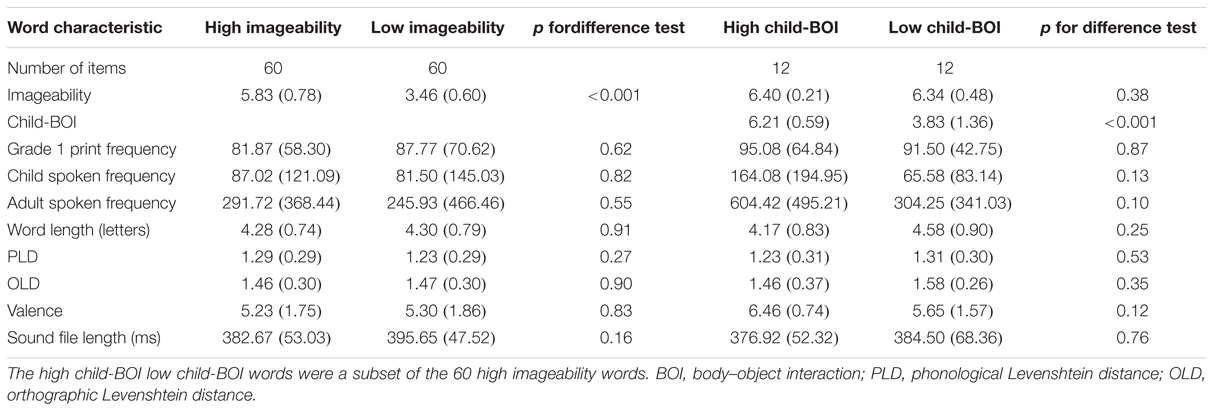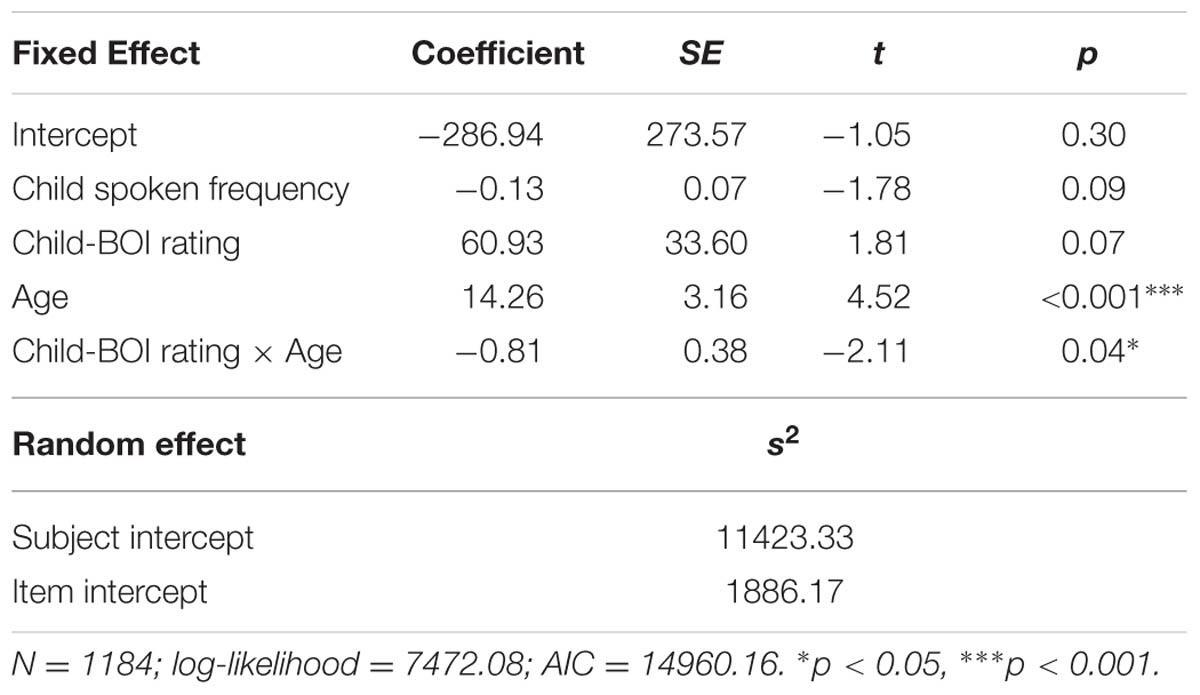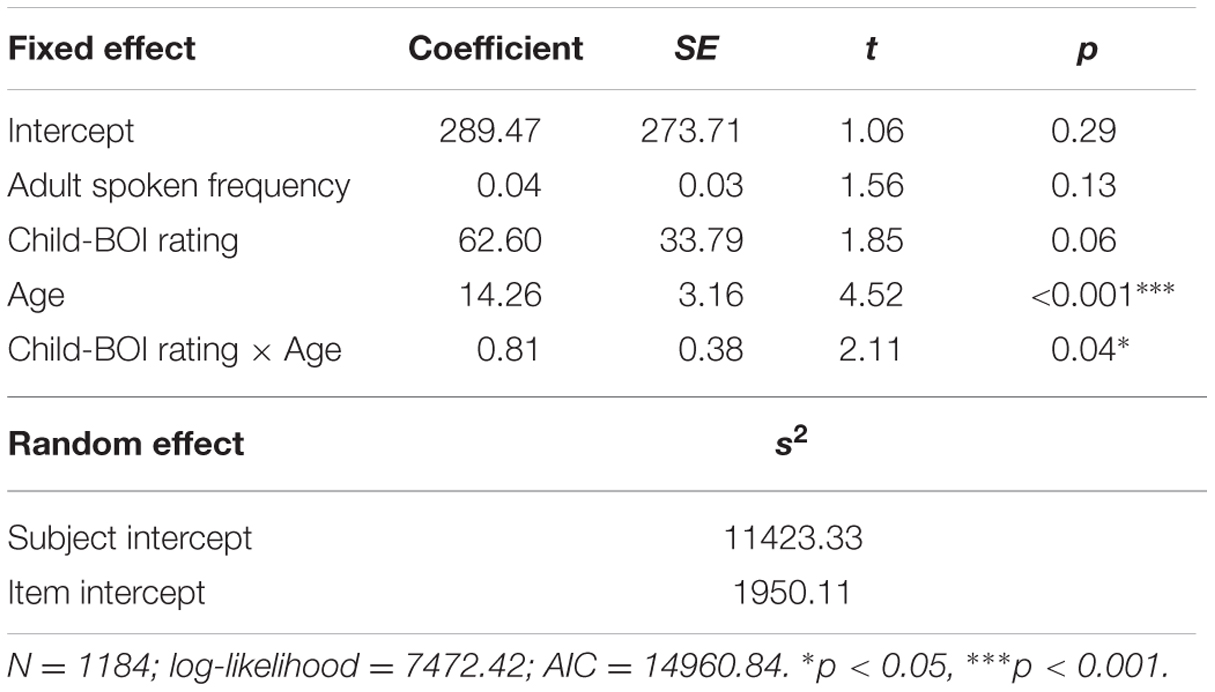Explore Multiple Meaning Words And Games For Kids
There are several words with the same spelling but different meanings. These words are called homonyms. In this article, we’ve listed a few multiple meaning words games that can help your child better understand homonyms.
You can explore multiple meaning words for kids. There are substantial lists of multiple meaning word games for kids available online. Teaching vocabulary for kids will enable them to develop educational growth. These are the words that mean two things. For example, Note, it means textual writing and musical script, and Trunk which means elephant nose and box. Therefore, you can check the list of the same words with different meanings to teach vocabulary words for kids. With this, they will be able to upgrade their reading and writing skills. Check out some of the multiple meaning words for kids mentioned below:
Multiple Meaning Words List
Here are a few words that have more than one meaning:
- Bark: It means the sound a dog makes + a tree’s outer layer
- Bat: It means an object used to hit a ball + a nocturnal mammal
- Can: It means a metal container + the ability to do something
- Die: It means to stop living + a cube with numbers 1-6
- Lie: It means to rest or recline + to not say the truth
- Match: It means pairing similar items together + a stick used to make flames
- Pound: It means a unit of weight + to beat something/someone
- Right: It signifies being correct + a direction
- Rose: It means to get up + a flower
- Tire: It means to become exhausted + a part of a wheel
- Saw: It means to see + a tool to cut woods
- Sink: It mean an area to wash utensils + drowning
- Nail: It means a fingernail + a small metal spike
- Fly: It means an insect + flying in the sky
- Wave: It means to seek attention of someone + a water rise on the shore
- Palm: It means front side of the arm + a tree near the seashore
- Crane: It signifies vehicle to carry loads + a bird
- Nut: It means a dry fruit + a metallic spike used for fixing things.
- Ring: It means sound of the phone + an ornament
- Bow: It means an accessories to wear on the neck + to greet someone
- Seal: It means to stamp documents + a sea animal
- Court: It means a place of law + specific area assigned for playing sport
- Handle: It means to hold + take care of situation
- Glass: It means vessel to drink + Spectacles
- Tie: It means to fix something + an accessory to wear on the neck
- Light: It means illumination or something that makes things visible + not so heavy
- Bear: It means to hold or support something + an animal
- Mouse: It means an animal + a device used for computer
- Spring: It means a weather+ an equipment that moves upside down
- Bank: It means a place where you can deposit or withdraw money + place alongside the river or lake
- Watch: It means to see something + an accessory to see time
- Store: It means to keep somethings + a place to buy essential things
- Leaves: It means holidays + a part of the plant.
- Space: It means an unoccupied area + region around the planets
- Mine: It means something that belongs to you + an area where coal is found.
- Bore: It means unpleasant situation + to dig something
- Pupil: It means a circular black area of an eye + an young student
- Clear: It means something transparent + information easy to understand
- Sole: It means only one + area below the foot
Multiple Meaning Words For Grade 1, 2, 3 & 4:
- Clip: It means a visual of video + hair accessories
- Left: It means leaving some place + one side of the body part (for example, left hand)
- Ship: It means delivering package + large size boat on the ocean
- Train: It means to teach something + long vehicle carrying passengers
- Minute: It means time + small or tiny thing
- Park: It means specific area + large garden used by people to walk and exercise
- Fan: It means an apparatus used for cooling and ventilation + a person who admires someone
- Chip: It means snack for munching + a small broken piece
- Fair: It means being non discriminatory + skin complexion
- Tear: It means pulling apart something + muscle stretch or wound
Just how these words that have multiple meanings are called homonyms, there are words that have different meanings, same spellings, but different pronunciations. Those are called Homographs. For example, the word ‘bow’ could refer to archery equipment, and could also refer to bending. Both spell the same but sound different.
Similarly, some words with different meanings have the same pronunciation but different spellings. These are called Homophones. For example, the word ‘two’ means a number. Whereas the word ‘too’ refers to adding on to something. These are words that mean two things but sound exactly the same.
Fun Games to Understand Multiple Meaning Words
Here are a few multiple meaning words games your kids will love.
Match the Words: Understanding Words with Two Meanings
For this game, you need to create two batches of cards. The first batch would contain multiple meaning words, and the second batch would contain multiple meaning words sentences. An example of a pair of sentences would be “Jack threw the ____ to Jim”, and “Jennifer went to the ____ and danced all night” You guessed the word. It’s ‘ball’! Kids need to match both cards accordingly.
Homonym Charades: Act Out Words with Different Interpretations
As you guessed, all kids must do is act out various words with many meanings. You could first split kids into two teams, and then have each of them draw out a card with a homonym on it. For example, if a child picks out the word ‘rose’, they could act the word out in 2 different ways. First, a flower, and then the act of getting up. You could even refer to our multiple meaning words list above!
Check out Osmo’s digital-physical game, Words, now! It could be a great way to teach your child about homonyms.
Come Up with Another Sentence: Learn Dual Meaning Words
Write down sentences on chits of paper and have each child pick them up. If they pick a chit with a sentence like ‘I read a book yesterday’, they need to come up with another sentence with a word used in that sentence. Such as ‘I have to book a reservation at this hotel’ — same word, different meaning!
Homonym Race: Match Words that Have Different Meanings
Here’s another game to understand words that have multiple meanings. All you have to do is to scatter around picture cards/cards with written words on them. Kids need to race to find and touch the homonyms. For example, you could print out an image of a tire, and also an image of an exhausted boy. (the word is “tire”) Kids need to race to touch them both or match them and bring them to you. More examples of dual meaning words include ‘tie’, ‘band’, ‘ring’, and so much more.
Hide & Seek: Best Multiple Meaning Words Games
Test your child’s knowledge of English words with multiple meanings with this fun-filled homonym game! First, give each child a homonym card. (such as the word ‘bank’) Then, have them hunt for the definition cards that match this homonym. One definition card could read ‘a place where you deposit money’, and the other definition could be ‘the land alongside a river’.
For more kids learning games and literacy games, check the rest of our website!
Frequently Asked Questions on Multiple Meaning Words
What are some of the examples of multiple meaning words?
Some of the examples of multiple meaning words for kids are Bore: a tedious situation and to dig, Glass: spectacles and a container to drink, Rose: a flower and to get up, Palm: a tree and the front part of the arm, etc.
What are some Fun Games to Understand Multiple Meaning Words?
Some of the Fun Games to teach Multiple Meaning Words to kids are matching the words and helping them to understand the meaning of 2 words, assisting them to form 2 sentences which has the same word but a different meaning, etc.
What are multiple meaning words?
The multiple meaning words for kids are those words that have the same spelling with different meanings. These set of words are known as Homonyms. These words help kids to have a better understanding of the language and improve their vocabulary.
Скачать материал

Скачать материал


- Сейчас обучается 268 человек из 64 регионов






Описание презентации по отдельным слайдам:
-
1 слайд
Word Meaning
Lecture # 6
Grigoryeva M. -
2 слайд
Word Meaning
Approaches to word meaning
Meaning and Notion (понятие)
Types of word meaning
Types of morpheme meaning
Motivation
-
3 слайд
Each word has two aspects:
the outer aspect
( its sound form)
catthe inner aspect
(its meaning)
long-legged, fury animal with sharp teeth
and claws -
4 слайд
Sound and meaning do not always constitute a constant unit even in the same language
EX a temple
a part of a human head
a large church -
5 слайд
Semantics (Semasiology)
Is a branch of lexicology which studies the
meaning of words and word equivalents -
6 слайд
Approaches to Word Meaning
The Referential (analytical) approachThe Functional (contextual) approach
Operational (information-oriented) approach
-
7 слайд
The Referential (analytical) approach
formulates the essence of meaning by establishing the interdependence between words and things or concepts they denotedistinguishes between three components closely connected with meaning:
the sound-form of the linguistic sign,
the concept
the actual referent -
8 слайд
Basic Triangle
concept (thought, reference) – the thought of the object that singles out its essential features
referent – object denoted by the word, part of reality
sound-form (symbol, sign) – linguistic sign
concept – flowersound-form referent
[rәuz] -
9 слайд
In what way does meaning correlate with
each element of the triangle ?In what relation does meaning stand to
each of them? -
10 слайд
Meaning and Sound-form
are not identical
different
EX. dove — [dΛv] English sound-forms
[golub’] Russian BUT
[taube] German
the same meaning -
11 слайд
Meaning and Sound-form
nearly identical sound-forms have different meanings in different languages
EX. [kot] Russian – a male cat
[kot] English – a small bed for a childidentical sound-forms have different meanings (‘homonyms)
EX. knight [nait]
night [nait] -
12 слайд
Meaning and Sound-form
even considerable changes in sound-form do not affect the meaningEX Old English lufian [luvian] – love [l Λ v]
-
13 слайд
Meaning and Concept
concept is a category of human cognitionconcept is abstract and reflects the most common and typical features of different objects and phenomena in the world
meanings of words are different in different languages
-
14 слайд
Meaning and Concept
identical concepts may have different semantic structures in different languagesEX. concept “a building for human habitation” –
English Russian
HOUSE ДОМ+ in Russian ДОМ
“fixed residence of family or household”
In English HOME -
15 слайд
Meaning and Referent
one and the same object (referent) may be denoted by more than one word of a different meaning
cat
pussy
animal
tiger -
16 слайд
Meaning
is not identical with any of the three points of the triangle –
the sound form,
the concept
the referentBUT
is closely connected with them. -
17 слайд
Functional Approach
studies the functions of a word in speech
meaning of a word is studied through relations of it with other linguistic units
EX. to move (we move, move a chair)
movement (movement of smth, slow movement)The distriution ( the position of the word in relation to
others) of the verb to move and a noun movement is
different as they belong to different classes of words and
their meanings are different -
18 слайд
Operational approach
is centered on defining meaning through its role in
the process of communicationEX John came at 6
Beside the direct meaning the sentence may imply that:
He was late
He failed to keep his promise
He was punctual as usual
He came but he didn’t want toThe implication depends on the concrete situation
-
19 слайд
Lexical Meaning and Notion
Notion denotes the reflection in the mind of real objectsNotion is a unit of thinking
Lexical meaning is the realization of a notion by means of a definite language system
Word is a language unit -
20 слайд
Lexical Meaning and Notion
Notions are international especially with the nations of the same cultural levelMeanings are nationally limited
EX GO (E) —- ИДТИ(R)
“To move”
BUT !!!
To GO by bus (E)
ЕХАТЬ (R)EX Man -мужчина, человек
Она – хороший человек (R)
She is a good person (E) -
21 слайд
Types of Meaning
Types of meaninggrammatical
meaninglexico-grammatical
meaning
lexical meaning
denotational
connotational -
22 слайд
Grammatical Meaning
component of meaning recurrent in identical sets of individual forms of different wordsEX. girls, winters, toys, tables –
grammatical meaning of pluralityasked, thought, walked –
meaning of past tense -
23 слайд
Lexico-grammatical meaning
(part –of- speech meaning)
is revealed in the classification of lexical items into:
major word classes (N, V, Adj, Adv)
minor ones (artc, prep, conj)words of one lexico-grammatical class have the same paradigm
-
24 слайд
Lexical Meaning
is the meaning proper to the given linguistic unit in all its forms and distributionsEX . Go – goes — went
lexical meaning – process of movement -
25 слайд
PRACTICE
Group the words into 3 column according to the grammatical, lexical or part-of –speech meaning
Boy’s, nearest, at, beautiful,
think, man, drift, wrote,
tremendous, ship’s, the most beautiful,
table, near, for, went, friend’s,
handsome, thinking, boy,
nearer, thought, boys,
lamp, go, during. -
26 слайд
Grammatical
The case of nouns: boy’s, ship’s, friend’s
The degree of comparison of adj: nearest, the most beautiful
The tense of verbs: wrote, went, thoughtLexical
Think, thinking, thought
Went, go
Boy’s, boy, boys
Nearest, near, nearer
At, for, during (“time”)
Beautiful, the most beautifulPart-of-speech
Nouns—verbs—adj—-prep -
27 слайд
Aspects of Lexical meaning
The denotational aspectThe connotational aspect
The pragmatic aspect
-
28 слайд
Denotational Meaning
“denote” – to be a sign of, stand as a symbol for”establishes the correlation between the name and the object
makes communication possibleEX booklet
“a small thin book that gives info about smth” -
29 слайд
PRACTICE
Explain denotational meaningA lion-hunter
To have a heart like a lion
To feel like a lion
To roar like a lion
To be thrown to the lions
The lion’s share
To put your head in lion’s mouth -
30 слайд
PRACTICE
A lion-hunter
A host that seeks out celebrities to impress guests
To have a heart like a lion
To have great courage
To feel like a lion
To be in the best of health
To roar like a lion
To shout very loudly
To be thrown to the lions
To be criticized strongly or treated badly
The lion’s share
Much more than one’s share
To put your head in lion’s mouth -
31 слайд
Connotational Meaning
reflects the attitude of the speaker towards what he speaks about
it is optional – a word either has it or notConnotation gives additional information and includes:
The emotive charge EX Daddy (for father)
Intensity EX to adore (for to love)
Imagery EX to wade through a book
“ to walk with an effort” -
32 слайд
PRACTICE
Give possible interpretation of the sentencesShe failed to buy it and felt a strange pang.
Don’t be afraid of that woman! It’s just barking!
He got up from his chair moving slowly, like an old man.
The girl went to her father and pulled his sleeve.
He was longing to begin to be generous.
She was a woman with shiny red hands and work-swollen finger knuckles. -
33 слайд
PRACTICE
Give possible interpretation of the sentences
She failed to buy it and felt a strange pang.
(pain—dissatisfaction that makes her suffer)
Don’t be afraid of that woman! It’s just barking!
(make loud sharp sound—-the behavior that implies that the person is frightened)
He got up from his chair moving slowly, like an old man.
(to go at slow speed—was suffering or was ill)
The girl went to her father and pulled his sleeve.
(to move smth towards oneself— to try to attract smb’s attention)
He was longing to begin to be generous.
(to start doing— hadn’t been generous before)
She was a woman with shiny red hands and work-swollen finger knuckles.
(colour— a labourer involved into physical work ,constant contact with water) -
34 слайд
The pragmatic aspect of lexical meaning
the situation in which the word is uttered,
the social circumstances (formal, informal, etc.),
social relationships between the interlocutors (polite, rough, etc.),
the type and purpose of communication (poetic, official, etc.)EX horse (neutral)
steed (poetic)
nag (slang)
gee-gee (baby language) -
35 слайд
PRACTICE
State what image underline the meaningI heard what she said but it didn’t sink into my mind.
You should be ashamed of yourself, crawling to the director like that.
They seized on the idea.
Bill, chasing some skirt again?
I saw him dive into a small pub.
Why are you trying to pin the blame on me?
He only married her for her dough. -
36 слайд
PRACTICE
State what image underline the meaning
I heard what she said but it didn’t sink into my mind.
(to understand completely)
You should be ashamed of yourself, crawling to the director like that.
(to behave humbly in order to win favour)
They seized on the idea.
(to be eager to take and use)
Bill, chasing some skirt again?
(a girl)
I saw him dive into a small pub.
(to enter suddenly)
Why are you trying to pin the blame on me?
(to blame smb unfairly)
He only married her for her dough.
(money) -
37 слайд
Types of Morpheme Meaning
lexical
differential
functional
distributional -
38 слайд
Lexical Meaning in Morphemes
root-morphemes that are homonymous to words possess lexical meaning
EX. boy – boyhood – boyishaffixes have lexical meaning of a more generalized character
EX. –er “agent, doer of an action” -
39 слайд
Lexical Meaning in Morphemes
has denotational and connotational components
EX. –ly, -like, -ish –
denotational meaning of similiarity
womanly , womanishconnotational component –
-ly (positive evaluation), -ish (deragotary) женственный — женоподобный -
40 слайд
Differential Meaning
a semantic component that serves to distinguish one word from all others containing identical morphemesEX. cranberry, blackberry, gooseberry
-
41 слайд
Functional Meaning
found only in derivational affixes
a semantic component which serves to
refer the word to the certain part of speechEX. just, adj. – justice, n.
-
42 слайд
Distributional Meaning
the meaning of the order and the arrangement of morphemes making up the word
found in words containing more than one morpheme
different arrangement of the same morphemes would make the word meaningless
EX. sing- + -er =singer,
-er + sing- = ? -
43 слайд
Motivation
denotes the relationship between the phonetic or morphemic composition and structural pattern of the word on the one hand, and its meaning on the othercan be phonetical
morphological
semantic -
44 слайд
Phonetical Motivation
when there is a certain similarity between the sounds that make up the word and those produced by animals, objects, etc.EX. sizzle, boom, splash, cuckoo
-
45 слайд
Morphological Motivation
when there is a direct connection between the structure of a word and its meaning
EX. finger-ring – ring-finger,A direct connection between the lexical meaning of the component morphemes
EX think –rethink “thinking again” -
46 слайд
Semantic Motivation
based on co-existence of direct and figurative meanings of the same wordEX a watchdog –
”a dog kept for watching property”a watchdog –
“a watchful human guardian” (semantic motivation) -
-
48 слайд
Analyze the meaning of the words.
Define the type of motivation
a) morphologically motivated
b) semantically motivatedDriver
Leg
Horse
Wall
Hand-made
Careless
piggish -
49 слайд
Analyze the meaning of the words.
Define the type of motivation
a) morphologically motivated
b) semantically motivated
Driver
Someone who drives a vehicle
morphologically motivated
Leg
The part of a piece of furniture such as a table
semantically motivated
Horse
A piece of equipment shaped like a box, used in gymnastics
semantically motivated -
50 слайд
Wall
Emotions or behavior preventing people from feeling close
semantically motivated
Hand-made
Made by hand, not machine
morphologically motivated
Careless
Not taking enough care
morphologically motivated
Piggish
Selfish
semantically motivated -
51 слайд
I heard what she said but it didn’t sink in my mind
“do down to the bottom”
‘to be accepted by mind” semantic motivationWhy are you trying to pin the blame on me?
“fasten smth somewhere using a pin” –
”to blame smb” semantic motivationI was following the man when he dived into a pub.
“jump into deep water” –
”to enter into suddenly” semantic motivationYou should be ashamed of yourself, crawling to the director like that
“to move along on hands and knees close to the ground” –
“to behave very humbly in order to win favor” semantic motivation
Найдите материал к любому уроку, указав свой предмет (категорию), класс, учебник и тему:
6 210 150 материалов в базе
-
Выберите категорию:
- Выберите учебник и тему
- Выберите класс:
-
Тип материала:
-
Все материалы
-
Статьи
-
Научные работы
-
Видеоуроки
-
Презентации
-
Конспекты
-
Тесты
-
Рабочие программы
-
Другие методич. материалы
-
Найти материалы
Другие материалы
- 22.10.2020
- 141
- 0
- 21.09.2020
- 530
- 1
- 18.09.2020
- 256
- 0
- 11.09.2020
- 191
- 1
- 21.08.2020
- 197
- 0
- 18.08.2020
- 123
- 0
- 03.07.2020
- 94
- 0
- 06.06.2020
- 73
- 0
Вам будут интересны эти курсы:
-
Курс повышения квалификации «Формирование компетенций межкультурной коммуникации в условиях реализации ФГОС»
-
Курс профессиональной переподготовки «Клиническая психология: теория и методика преподавания в образовательной организации»
-
Курс повышения квалификации «Введение в сетевые технологии»
-
Курс повышения квалификации «История и философия науки в условиях реализации ФГОС ВО»
-
Курс повышения квалификации «Основы построения коммуникаций в организации»
-
Курс повышения квалификации «Организация практики студентов в соответствии с требованиями ФГОС медицинских направлений подготовки»
-
Курс повышения квалификации «Правовое регулирование рекламной и PR-деятельности»
-
Курс повышения квалификации «Организация маркетинга в туризме»
-
Курс повышения квалификации «Источники финансов»
-
Курс профессиональной переподготовки «Техническая диагностика и контроль технического состояния автотранспортных средств»
-
Курс профессиональной переподготовки «Осуществление и координация продаж»
-
Курс профессиональной переподготовки «Технический контроль и техническая подготовка сварочного процесса»
-
Курс профессиональной переподготовки «Управление качеством»
Words at Play
-
12 Political PutdownsFor When ‘Lowdown Crook’ Isn’t Specific Enough
-
Absent Letters That Are Heard AnywayWhen letters make sounds that aren’t associated w…
-
Better Ways to Say «This Sucks»Go on…make your English teacher proud.
-
When Were Words First Used?Look up any year to find out
Ask the Editors
-
Weird PluralsOne goose, two geese. One moose, two… moose. Wh…
-
IrregardlessIt is in fact a real word (but that doesn’t mean …
-
Bring vs. TakeBoth words imply motion, but the difference may b…
-
DefenestrationThe fascinating story behind many people’s favori…
Word Games
-
Farm Idioms QuizIf you’ve got a pig in a poke — what exactly is a…
Take the quiz
-
Name That Hat!Time to put on your thinking cap.
Take the quiz
-
Name That ThingYou know what it looks like… but what is it cal…
Take the quiz
-
Spelling Bee QuizCan you outdo past winners of the National Spelli…
Take the quiz
Word Meaning with Common Suffixes
Word Meaning with Common Suffixes
Are you careful, caring, or careless? A suffix is a word part that changes the meaning of a word. Use this lesson with your students to teach them how to determine word meaning based on their understanding of the meaning of common suffixes.
3rd grade
Reading & Writing
Compound Word Meaning
In this worksheet, learners will practice using context clues to find the meaning of eight compound words.
2nd grade
Reading & Writing
Shades of Meaning: Which Word?
Shades of Meaning: Which Word?
Explore shades of meaning in related words with this third-grade grammar worksheet!
3rd grade
Reading & Writing
Build Vocabulary: Word Meaning and Spelling #4
Build Vocabulary: Word Meaning and Spelling #4
Children build their vocabulary in this word meaning and spelling worksheet by learning 10 new vocabulary words, along with their definitions, then writing them on the spaces provided.
5th grade
Reading & Writing
Build Vocabulary: Word Meaning and Spelling #1
Build Vocabulary: Word Meaning and Spelling #1
Children build their vocabulary in this word meaning and spelling worksheet by learning 10 new vocabulary words, along with their definitions, then writing them on the spaces provided.
5th grade
Reading & Writing
Build Vocabulary: Word Meaning and Spelling #2
Build Vocabulary: Word Meaning and Spelling #2
Children build their vocabulary in this word meaning and spelling worksheet by learning 10 new vocabulary words, along with their definitions, then writing them on the spaces provided.
5th grade
Reading & Writing
Build Vocabulary: Word Meaning and Spelling #14
Build Vocabulary: Word Meaning and Spelling #14
Children build their vocabulary in this word meaning and spelling worksheet by learning 10 new vocabulary words, along with their definitions, then writing them on the spaces provided.
5th grade
Reading & Writing
Build Vocabulary: Word Meaning and Spelling #15
Build Vocabulary: Word Meaning and Spelling #15
Children build their vocabulary in this word meaning and spelling worksheet by learning 10 new vocabulary words, along with their definitions, then writing them on the spaces provided.
5th grade
Reading & Writing
Build Vocabulary: Word Meaning and Spelling #3
Build Vocabulary: Word Meaning and Spelling #3
Children build their vocabulary in this word meaning and spelling worksheet by learning 10 new vocabulary words, along with their definitions, then writing them on the spaces provided.
5th grade
Reading & Writing
Build Vocabulary: Word Meaning and Spelling #12
Build Vocabulary: Word Meaning and Spelling #12
Children build their vocabulary in this word meaning and spelling worksheet by learning 10 new vocabulary words, along with their definitions, then writing them on the spaces provided.
5th grade
Reading & Writing
Build Vocabulary: Word Meaning and Spelling #6
Build Vocabulary: Word Meaning and Spelling #6
Children build their vocabulary in this word meaning and spelling worksheet by learning 10 new vocabulary words, along with their definitions, then writing them on the spaces provided.
5th grade
Reading & Writing
Build Vocabulary: Word Meaning and Spelling #10
Build Vocabulary: Word Meaning and Spelling #10
Children build their vocabulary in this word meaning and spelling worksheet by learning 10 new vocabulary words, along with their definitions, then writing them on the spaces provided.
5th grade
Reading & Writing
Build Vocabulary: Word Meaning and Spelling #11
Build Vocabulary: Word Meaning and Spelling #11
Children build their vocabulary in this word meaning and spelling worksheet by learning 10 new vocabulary words, along with their definitions, then writing them on the spaces provided.
5th grade
Reading & Writing
Build Vocabulary: Word Meaning and Spelling #13
Build Vocabulary: Word Meaning and Spelling #13
Children build their vocabulary in this word meaning and spelling worksheet by learning 10 new vocabulary words, along with their definitions, then writing them on the spaces provided.
5th grade
Reading & Writing
Build Vocabulary: Word Meaning and Spelling #5
Build Vocabulary: Word Meaning and Spelling #5
Children build their vocabulary in this word meaning and spelling worksheet by learning 10 new vocabulary words, along with their definitions, then writing them on the spaces provided.
5th grade
Reading & Writing
Build Vocabulary: Word Meaning and Spelling #7
Build Vocabulary: Word Meaning and Spelling #7
Children build their vocabulary in this word meaning and spelling worksheet by learning 10 new vocabulary words, along with their definitions, then writing them on the spaces provided.
5th grade
Reading & Writing
Build Vocabulary: Word Meaning and Spelling #8
Build Vocabulary: Word Meaning and Spelling #8
Children build their vocabulary in this word meaning and spelling worksheet by learning 10 new vocabulary words, along with their definitions, then writing them on the spaces provided.
5th grade
Reading & Writing
Build Vocabulary: Word Meaning and Spelling #9
Build Vocabulary: Word Meaning and Spelling #9
Children build their vocabulary in this word meaning and spelling worksheet by learning 10 new vocabulary words, along with their definitions, then writing them on the spaces provided.
5th grade
Reading & Writing
Practice Using Prefixes to Determine Word Meaning
Practice Using Prefixes to Determine Word Meaning
Students will learn how knowledge of word parts can help readers determine the meaning of words. This interactive lesson will have students reviewing and putting into practice some of the most common prefixes.
5th grade
Reading & Writing
Compound Words: Match, Meaning, and Draw
Compound Words: Match, Meaning, and Draw
Children will draw from a word bank to form five new compound words, then write and illustrate their meaning.
3rd grade
Reading & Writing
Using Word Parts to Determine the Meaning of Words
Using Word Parts to Determine the Meaning of Words
Give your readers the tools to decipher the meaning of Greek and Latin based words. In this lesson they review the meaning of commonly used prefixes, suffixes and roots and then practice constructing and deciphering words.
5th grade
Reading & Writing
Root Out the Meaning of Words
Root Out the Meaning of Words
Here’s a fun activity to show your child how to use prefixes and root words to «root out» the meaning of a word!
5th grade
Reading & Writing
Word Meaning 2
Words are the wondrous building blocks in language. This unit increases students’ word knowledge by introducing more challenging vocabulary and exploring how words are related. Learners will also discover some of the ways words are constructed using derivational root words, prefixes, suffixes, and compound words. Students will get to explore and create fun literary devices such as similes, idioms and metaphors.
4th grade
Reading & Writing
-
Home
- »
-
Quizzes
- »
-
For Children Trivia
- »
-
Words for Kids

Here’s a chance to test your vocabulary — and maybe learn the meaning of some new words.
63 Word Meanings quizzes and 625
Word Meanings trivia questions.
1.
Each answer in this quiz ends with either -ick or -ink. Can you get all ten of them?
Very Easy, 10 Qns, Catreona,
Dec 26 22
Recommended for grades: 3,4,5
Very Easy
Catreona
Dec 26 22
289 plays
2.
Let’s see if you can identify the words from the information I have provided. They all start and end with the same letters. Good luck!
Very Easy, 10 Qns, ponycargirl,
Apr 21 20
Recommended for grades: 4,5
Very Easy
ponycargirl
Apr 21 20
2018 plays
3.
This quiz explores words that have to do with the number three.
Very Easy, 10 Qns, robynraymer,
Oct 26 05
Very Easy
robynraymer
10062 plays
4.
Let’s see if you can identify the words from the information I have provided. They all start and end with the same letter. Good luck!
Very Easy, 10 Qns, ponycargirl,
May 24 17
Recommended for grades: 1,2,3,4,5
Very Easy
ponycargirl
May 24 17
1117 plays
5.
I’ll give you three things that belong to a group. You find another thing that fits in that group. Example: Apples, oranges, and bananas are fruits, so strawberries would fit in that group, but bandanas, cookies, and crayons wouldn’t fit.
Very Easy, 10 Qns, robynraymer,
Apr 12 07
Very Easy
robynraymer
14261 plays
6.
I give you a word. You pick the word with the opposite meaning.
Very Easy, 10 Qns, robynraymer,
Mar 26 21
Very Easy
robynraymer
Mar 26 21
11740 plays
7.
My grandson loves to play with his train! Did you know that there are all kinds of train slang terms that are used in other ways today? Come learn with us!
Easier, 10 Qns, ponycargirl,
Mar 05 22
Recommended for grades: 6,7,8
Easier
ponycargirl
Mar 05 22
1636 plays
8.
I’ll give you the definition, and you need to choose the word with that meaning from the four options given.
Very Easy, 10 Qns, rossian,
Mar 10 20
Very Easy
rossian
Mar 10 20
908 plays
9.
‘Come on, baby, light my fire’ is the chorus of a song from the 1960s. Let’s look at some other common phrases using the word fire with different meanings.
Very Easy, 10 Qns, looney_tunes,
Mar 31 13
Very Easy
looney_tunes
4392 plays
10.
WOW
— 10 questions
— 2 mins
Hey kids! I have picked out some word pairs starting with the letters WOW, and all you need to do is guess the correct answer. Good luck!
Very Easy, 10 Qns, Plodd,
Aug 18 13
Recommended for grades: 1,2,3,4,5
Very Easy
Plodd
1953 plays

This is what you do to a lollipop, a gob stopper or any candy of that sort.
Choose the word that fits the clue:
From Quiz «Is it UCK or UNK?«
11.
This quiz is about words like IN, OUT, UP, DOWN, AROUND, THROUGH, UNDER, OVER, TO and FROM. These words are called prepositions.
Very Easy, 10 Qns, robynraymer,
Nov 25 03
Very Easy
robynraymer
13487 plays
12.
Ian is a very talented fellow who has many different jobs. See if you can work out all the things he can do. Remember every word you are looking for ends in «ian».
Very Easy, 10 Qns, Nannanut,
Mar 30 08
Very Easy
Nannanut
4519 plays
13.
This quiz explores words that have to do with the number two.
Very Easy, 10 Qns, robynraymer,
May 27 16
Very Easy
robynraymer
6759 plays
14.
This quiz explores words that have to do with the number four. By the way, «The Fab (Fabulous) Four» is what fans used to call The Beatles, a rock group with four members.
Very Easy, 10 Qns, robynraymer,
Sep 28 05
Very Easy
robynraymer
6711 plays
15.
This quiz explores words whose meanings have to do with the number eight.
Very Easy, 10 Qns, robynraymer,
Oct 18 05
Very Easy
robynraymer
6876 plays
16.
This quiz explores words that have to do with the number one.
Very Easy, 10 Qns, robynraymer,
Sep 19 05
Very Easy
robynraymer
6622 plays
17.
Match the brief description to the correct word containing the word «ball».
Very Easy, 10 Qns, ClarkyB,
Jan 20 17
Recommended for grades: 5,6,7
Very Easy
ClarkyB
Jan 20 17
1231 plays
18.
These words all have ‘key’ in them somewhere. Can you match up each word to its correct meaning?
Very Easy, 10 Qns, eburge,
Aug 26 18
Recommended for grades: 6,7,8
Very Easy
eburge
Aug 26 18
833 plays
19.
This quiz explores words that have to do with the numbers five and ten.
Easier, 10 Qns, robynraymer,
Oct 04 05
Easier
robynraymer
5997 plays
20.
Lots of words have CAT in them — see how many you can match up with their meaning. Have fun!
Very Easy, 10 Qns, invinoveritas,
Mar 14 17
Recommended for grades: 1,2,3,4,5
Very Easy
invinoveritas
Mar 14 17
1186 plays
21.
Match the brief description to the correct word containing the letters «key».
Very Easy, 10 Qns, ClarkyB,
Jan 14 17
Recommended for grades: 1,2,3,4,5
Very Easy
ClarkyB
Jan 14 17
1180 plays
22.
All these «black» words are mixed up and you need to match them up against their correct meaning. Good luck!
Very Easy, 10 Qns, Plodd,
Jan 22 17
Recommended for grades: 5,6,7
Very Easy
Plodd
Jan 22 17
1116 plays
23.
Can you correctly match these descriptions with the words created for them?
Very Easy, 10 Qns, zorba_scank,
Nov 03 17
Recommended for grades: 1,2,3,4,5
Very Easy
zorba_scank
Nov 03 17
853 plays
24.
I’ll give you three things that belong to a group. You find a fourth one that fits in the same group. Question one will give you an example.
Very Easy, 10 Qns, robynraymer,
Mar 21 19
Very Easy
robynraymer
Mar 21 19
6552 plays
25.
I will give you a description of what I am and you pick the correct answer.
Very Easy, 10 Qns, morrow,
Sep 29 15
Very Easy
morrow
9543 plays
26.
Match the seven-letter words that begin with the letters «wo» to their definitions.
Very Easy, 10 Qns, Joepetz,
Feb 06 19
Recommended for grades: 1,2,3,4,5
Very Easy
Joepetz
Feb 06 19
823 plays
27.
Match the «S» word to its definition. Hope you learn «s»omething new!
Very Easy, 10 Qns, Joepetz,
Dec 07 17
Recommended for grades: 1,2,3,4,5
Very Easy
Joepetz
Dec 07 17
1367 plays
28.
This is an easy quiz on every day words with more than one meaning but the same spelling. How many can you find? Have fun.
Very Easy, 10 Qns, fiachra,
Mar 31 05
Very Easy
fiachra
9237 plays
29.
Answer each question. Choose the BEST word to fill in each blank.
Very Easy, 10 Qns, robynraymer,
Jun 04 15
Very Easy
robynraymer
7298 plays
30.
Most of us talk and there are so many different ways that we talk. This quiz looks at some of those ways.
Very Easy, 10 Qns, pollucci19,
Jan 16 13
Very Easy
pollucci19
1321 plays
31.
All you need to do is select which word, that sounds like a letter of the alphabet, fits into the blank space in each sentence.
Very Easy, 10 Qns, lowtechmaster,
Aug 03 15
Very Easy
lowtechmaster
1381 plays
32.
Each answer in this quiz ends with either -uck or -unk. Can you get all ten of them?
Very Easy, 10 Qns, Catreona,
Dec 30 22
Recommended for grades: 3,4,5
Very Easy
Catreona
Dec 30 22
680 plays
33.
The words odd and even don’t just apply to numbers; they have quite a few different meanings. Let’s explore some and we’ll start with odd.
Very Easy, 10 Qns, pollucci19,
Apr 07 16
Very Easy
pollucci19
919 plays
34.
A compound word is made up of two (or more) shorter words mooshed together. For example, «redhead» and «schoolwork» are compound words. Your job is to find the word that is NOT a real compound word.
Easier, 10 Qns, robynraymer,
Apr 13 04
Easier
robynraymer
5266 plays
35.
Maybe you had lines as a punishment at school, so try these words that all end in «line». Next time your teacher gives you lines, say you’ve already done them on Fun Trivia.
Very Easy, 10 Qns, 480154st,
Mar 02 18
Very Easy
480154st
Mar 02 18
802 plays
36.
Match the M word to its description. Have fun and think carefully!
Very Easy, 10 Qns, Joepetz,
Mar 03 17
Recommended for grades: 5,6,7
Very Easy
Joepetz
Mar 03 17
789 plays
37.
This quiz will look for words that rhyme with thick and brick. Can you figure out what words I am looking for by the definitions?
Very Easy, 10 Qns, tazman6619,
May 03 12
Very Easy
tazman6619
1793 plays
38.
There are a lot of words associated with Christmas! Which words am I thinking of?
Very Easy, 10 Qns, funnytrivianna,
Dec 09 12
Very Easy
funnytrivianna
1460 plays
39.
You will find that all the answers begin with the letter «W» and end with the letter «T».
I «want» everyone to enjoy my little quiz. «Without» you, the «worst» that could happen is it could be a total «wipeout».
Very Easy, 10 Qns, Lilady,
Jan 04 10
Very Easy
Lilady
1964 plays
40.
If your name is Tom Baker, you might never have made a loaf of bread, but your ancestors surely did. In medieval times, people were known by their trade, such as ‘Tom the Baker’, and many of those trades have been handed down as surnames.
Easier, 10 Qns, EnglishJedi,
Mar 26 14
Easier
EnglishJedi
1658 plays
41.
Taxidermy involves stuffing and this quiz looks a different ways we can work with the word «stuff».
Very Easy, 10 Qns, pollucci19,
Sep 18 12
Very Easy
pollucci19
1085 plays
42.
The Four Winds have got together to create a word game — with all answers synonyms of the word «wind» (obtained from thesaurus.com). Can you guess these words? All are single-word answers.
Very Easy, 10 Qns, lones78,
Sep 08 18
Very Easy
lones78
Sep 08 18
617 plays
43.
I’ll give you a word starting with A and you have to match it to its definiton.
Very Easy, 10 Qns, cavaliersrock,
Oct 25 16
Very Easy
cavaliersrock
Oct 25 16
2664 plays
44.
Simply choose the word which forms a common expression.
Easier, 10 Qns, ARE7,
Jul 06 08
Easier
ARE7
7304 plays
45.
All of the answers in this quiz begin with the same three letters — «bun».
Easier, 10 Qns, beergirllaura,
Oct 29 09
Easier
beergirllaura
1722 plays
46.
Hey! All of the words contained in this quiz will have the two letters ‘OW’ together. The letters ‘OW’ are always together and they are never apart. Have fun and good luck!
Very Easy, 10 Qns, runaway_drive,
Mar 29 09
Very Easy
runaway_drive
2434 plays
47.
Match the word to the definition. This will be easier for older children. Good luck!
Easier, 10 Qns, RaceGirl24,
Oct 04 21
Easier
RaceGirl24
Oct 04 21
6974 plays
48.
The mad Professor Frankenmonster has been experimenting with potions in the attic again. His pet sasquatch has escaped and is running loose somewhere inside the castle and we need to find a safe place to hide before….Sasquatch, Attack!
Easier, 10 Qns, Plodd,
Sep 12 12
Easier
Plodd
1061 plays
49.
There are special words for the people who do certain occupations. Do you know what these people do?
Very Easy, 5 Qns, cryptix,
Jul 10 18
Very Easy
cryptix
Jul 10 18
7393 plays
50.
I’ll give you a sentence with a blank in it. You choose the correct C word to go into the blank.
Very Easy, 10 Qns, Ilona_Ritter,
Jun 05 16
Recommended for grades: 3,4,5,6
Very Easy
Ilona_Ritter
852 plays
51.
See if you know these words that start with «bea»! I’ll give you the definition and you give me the word. Enjoy!
Very Easy, 10 Qns, pinkbunny98,
Dec 15 18
Very Easy
pinkbunny98
Dec 15 18
613 plays
52.
People’s names often hint at the kind of work their ancestors used to carry out. From their family names, can you work out what these ancestors used to do?
Easier, 10 Qns, suomy,
Jan 01 13
Easier
suomy
1172 plays
53.
I will give you a word and you try to guess the meaning.
Very Easy, 10 Qns, pianochick92,
Apr 17 12
Very Easy
pianochick92
1444 plays
54.
Some of the important parts, or elements, of the English language originate from Latin or Greek. Some words can mean a number is involved, Come and see more of our wonderful, wonderful world of words.
Average, 10 Qns, underscored,
Apr 09 12
Average
underscored
715 plays
55.
Rings are not only found on fingers. They can be found in words too! Try and match the description to the ‘RING’ word in these questions. Good luck!
Very Easy, 10 Qns, mehaul,
Apr 09 12
Very Easy
mehaul
1222 plays
56.
ME likes to show off some of the many words in the English language that begin with her letters «M» and «E». Use the clues in this quiz to identify words that begin with ME.
Very Easy, 10 Qns, unterkircher,
Nov 26 11
Very Easy
unterkircher
1332 plays
57.
Letters of the alphabet can be used by themselves to mean something or can sound like certain words. Can you guess what they are?
Very Easy, 10 Qns, Toneman52,
Aug 06 12
Very Easy
Toneman52
1478 plays
58.
Using only the keys from the top line, find the words from the clues given.
Easier, 10 Qns, barrywlj,
Dec 31 10
Easier
barrywlj
1217 plays
59.
Given these clues, can you determine the answers, which are words that only use the first seven letters of the alphabet?
Average, 10 Qns, geniusonwheels,
Jan 30 09
Average
geniusonwheels
1854 plays
60.
My second in this category — all you have to do is find the word from the clues, using only letters from the second line of a qwerty keyboard. Good luck. 
Easier, 10 Qns, barrywlj,
Jan 03 11
Easier
barrywlj
1130 plays
61.
Given these clues, can you determine the answers, which are words that only use the first seven letters of the alphabet?
Average, 10 Qns, geniusonwheels,
Mar 11 09
Average
geniusonwheels
1722 plays
62.
ME is showing off again with more words in the English language that begin with her letters «M» and «E». Use the clues in this quiz to identify words that begin with ME.
Average, 10 Qns, unterkircher,
Dec 15 11
Average
unterkircher
874 plays
63.
Many animals have become verbs due to their habits or just by coincidence. I will give you the synonym of the verb, can you give me the animal?
Tough, 10 Qns, shawn888,
May 11 04
Tough
shawn888
2524 plays
This is category 10385
Last Updated Apr 08 2023 5:49 AM




=
added recently, = Editor’s Pick
= FunTrivia Editor
= Gold Member
Teachers / educators
: FunTrivia welcomes the use of our website and quizzes in the classroom as a teaching aid or for preparing and testing students. See our education section. Our quizzes are printable and may be used as question sheets by k-12 teachers, parents, and home schoolers.
· All questions, answers, and quiz content on this website is copyright FunTrivia, Inc and may not be reproduced without permission. Any images from TV shows and movies are copyright their studios, and are being used under «fair use» for commentary and education.
English vocabulary can be confusing for young learner. Today, we’re taking a look at one of those confusing parts – the multiple meaning words – that is, words that have more than one meaning.
To get technical for a minute, our multiple meaning words can be put in one of three categories:
- Homophones: words that sound the same, but are spelled differently and have different meanings. For example: ‘son’ and ‘sun’.
- Homonyms: words that sound the same, are spelled the same, but have different meanings.
- Homographs: words that sound different, are spelled the same, but have different meanings.
We’re going to focus on homonyms as they are the hardest to decipher for the young reader. In summary, the homonyms can be categorized into two sections: grades K-2, and grades 3-5. In fact, to be exact, there are 105 words that are most widely used and, therefore, important for students to know.
We’ve summarized them in the two sheets below, which you can print off in PDF format.
Kindergarten to grade 2 Multiple Meaning Words
Grades 3 — 5 Multiple Meaning Words

Become a Member
This content is available to members only.
Join K5 to save time, skip ads and access more content.
Learn More
Skip to content



- Home
-
Learning, Development, and Conceptual Change
- psychology
- How Children Learn the Meanings of Words
-
$35.00
Paperback -
Hardcover
-
Request permissions
-
Description
- Author(s)
- Praise
Related Books
Introduction
Theories of embodied cognition emphasize the importance of sensorimotor experience for acquiring and representing conceptual knowledge (e.g., Glenberg, 2015). The embodied cognition framework has had a strong influence in recent research on adult language processing. It has received less research attention in the developmental literature and yet, as Wellsby and Pexman (2014b) argued, in order to refine theories of embodied cognition it is important to consider and fully integrate developmental findings. The purpose of the present study was to investigate whether children’s previous sensorimotor experience with words’ referents influences their lexical processing of those words.
From an embodied cognition perspective, representations of word meaning are, at least in part, grounded in sensorimotor and other bodily systems (for a review see Meteyard et al., 2012). Hence, it should be possible to observe effects of sensorimotor information on lexical processing. Indeed, there is now extensive research examining the effects of imageability in visual word recognition tasks (e.g., Strain et al., 1995; Cortese et al., 1997). Imageability is characterized as a word’s ability to arouse mental imagery (visual, sound, etc., Cortese and Fugett, 2004). Typically, word recognition is facilitated for words with referents that can be more easily imaged/sensed.
While imageability primarily measures sensory experience with words’ referents, Siakaluk et al. (2008a) have characterized a measure that is more focused on motor experience with words’ referents. This is the body–object interaction variable (BOI) and ratings of this dimension capture how easily a human body can interact with a word’s referent. Research with adults shows that in lexical decision tasks, phonological lexical decision tasks, and semantic categorization tasks, words rated high in BOI (e.g., belt) are processed faster and/or more accurately than words rated low in BOI (e.g., ship; Siakaluk et al., 2008a,b; Tillotson et al., 2008). To be clear, these are all concrete, highly imageable words, and they differ only in rated ease of bodily interaction; word frequency, length, and other factors are matched across high BOI and low BOI word sets. The proposed explanation is that previous motor experience with words’ referents (as measured by the BOI variable) facilitates word recognition.
Siakaluk and colleagues have explained BOI effects in adult word recognition in terms of feedback activation in the lexical system. That is, in a fully interactive word recognition system comprised of orthographic, phonological, and semantic units (e.g., Harm and Seidenberg, 2004), it is assumed that words with richer semantic representations provide stronger feedback to the orthographic and phonological units. As a result, orthographic and phonological units are faster to settle into stable patterns of activation for words with relatively richer semantic representations. In most word recognition tasks, activity in the orthographic and phonological units provides the basis for responding (e.g., Hino and Lupker, 1996). If sensorimotor information is part of lexical semantic knowledge, then high BOI words will have richer semantic representations than low BOI words, and phonological and orthographic processing will be facilitated via semantic feedback. Similarly, high imageability words are presumed to have richer semantic representations than low imageability words and thus imageability effects emerge in lexical processing tasks.
While we now understand a great deal about how sensorimotor effects like BOI and imageability influence adult lexical processing, we know much less about when they begin to influence lexical processing in children. In the first study to explore development of BOI effects in children, Wellsby and Pexman (2014a) examined visual word naming performance for high and low BOI words in a group of younger children (aged 6–7 years), a group of older children (aged 8–9 years), and a group of adults. To facilitate comparisons across the groups, Wellsby and Pexman used a composite measure of naming performance that combined naming latency and accuracy information. Results showed a significant facilitatory BOI effect for the older children and the adults but not for the younger children. For children, the size of their BOI effect was related to their age and also to their reading skills; that is, BOI effects were larger for older children and for children with higher scores on a standardized reading test. As such, Wellsby and Pexman concluded that the BOI variable begins to influence children’s lexical processing at about 8 years of age. In reasoning about why the effect does not emerge in younger children, Wellsby and Pexman concluded that two explanations were viable: first, younger children may not yet have had sufficient sensorimotor interactions with the words’ referents to create richer representations for high BOI items; second, younger children’s reading skills may not yet be efficient enough to support semantic feedback. Indeed, consistent with simulations of models of the lexical processing system (e.g., Plaut et al., 1996), it has been suggested that semantic factors become more important as children progress beyond the early stages of reading development (Nation, 2009; Hulme and Snowling, 2013).
There are, however, two issues with the methodology of the Wellsby and Pexman (2014a) study that may have limited detection of BOI effects in the younger children in that study. First, the use of the visual naming task may have limited the effects observed. Wellsby and Pexman reported that the visual naming task was very challenging for the younger children. The younger children made many more naming errors than the older children and also seemed to be sounding out the words, naming them in a step-by-step fashion, which could have complicated the measurement of naming latencies. Visual naming and lexical decision are traditional lexical tasks, yet these have rarely been used with children younger than 8 years of age. This is because in younger children, word reading skills are not advanced enough to support performance in visual naming or lexical decision. Further, in studies using these tasks, there is limited evidence for effects of sensorimotor variables like imageability and concreteness (Coltheart et al., 1988; McFalls et al., 1996). Since naming and lexical decision tasks require that children translate spelling into sound and meaning, performance in those tasks depends heavily on children’s reading skills and this could complicate the detection of sensorimotor effects.
A lingering question is thus: would children younger than 8 years of age show sensorimotor effects if given a lexical processing task that was less dependent on reading skills, particularly orthographic skills? To address this question, we chose an alternative task that has been used before to examine semantic effects in adults’ lexical processing (Tyler et al., 2000; Wurm et al., 2004). This is the auditory naming task, in which participants hear words and repeat each one aloud as quickly and as accurately as they can. Tyler et al. (2000) compared imageability effects in auditory naming and auditory lexical decision. They found imageability effects in both tasks, even when controlling for word length and familiarity. They concluded that even though the tasks have differences (auditory naming involves articulation while auditory lexical decision involves a decision component), both tasks “tap into the activation of semantic representations” (p. 324). Wurm et al. (2004) noted that unlike visual naming, processing stimuli in auditory naming does not require orthography to phonology translation. As such, the auditory naming task should depend less on orthographic coding skills than do tasks like visual naming and visual lexical decision but should still involve semantic processing. Younger children should be more proficient in an auditory naming task than in a visual naming task as their experience processing spoken language is far greater than their experience processing written language.
An additional issue with the previous examination of BOI effects in children’s lexical processing involves the use of adult BOI ratings. While many studies have used adult ratings of semantic variables to assess effects of those variables in children’s language processing, this practice is particularly problematic for BOI. The BOI variable is intended to capture fine-grained differences between highly imageable words; that is, it provides an indication of differences in the average person’s previous experiences physically interacting with the words’ referents. Whereas adults rate axe and cane as high BOI, these would likely not be objects with which children have extensive physical experience. While children may have plenty of visual experience with these objects, their physical experience will be different, due to their stature, permitted activities, and other constraints. As such, while adults’ ratings of imageability (which primarily assess visual information) are probably applicable to children, adults’ BOI ratings of their own bodily experience may not capture variability in children’s physical interaction experience. This could have been a particular issue for the younger children in the Wellsby and Pexman study (the 6–7 year olds), who would have had even less experience with some of the objects than the older children, and this issue could have contributed to the null BOI effect observed for that group. There is a need to ensure that the words chosen to assess BOI effects in children’s lexical processing are high and low in terms of the average child’s BOIs. This was addressed in the present study by asking parents of children in this age range (6–7 years) to provide ratings using a dimension we refer to as child-BOI. We reasoned that parents with children in this age group would be best suited to make ratings of 6–7 year olds’ sensorimotor experiences with word referents since these parents have direct knowledge of their children’s activities.
In the present study, we thus examined imageability effects (comparing responses to high and low imageability words) and child-BOI effects (comparing responses to high and low child-BOI words, which were a subset of the high imageability words) in the auditory naming task. We tested a group of 6–7 year old children and also a group of adults. Adults were tested primarily as a control group to verify our assumptions about the auditory naming task. That is, although the auditory naming task has been used to examine semantic effects in lexical processing with adults (i.e., Tyler et al., 2000; Wurm et al., 2004), we wanted to assess whether the task was sensitive to the semantic dimensions manipulated here. We included measures of children’s reading skills as an additional evaluation of the task. While children’s reading skills were correlated with aspects of their visual naming performance in Wellsby and Pexman (2014a), the auditory task used here should be less dependent on children’s orthographic skills. Thus we expected that reading skills would not correlated with task performance in the current study.
If BOI effects can be observed before age 8, but were masked in the previous study (Wellsby and Pexman, 2014a) by task difficulty or by items which did not account for adult-child differences in physical interaction experience, then we expected to find a child-BOI effect with 6–7 year olds using the present study’s items and auditory naming task. This would be evidence that sensorimotor information is part of children’s lexical knowledge, consistent with an embodied framework for word meaning. By this framework, we also expected imageability effects in the auditory naming task. It is also possible, however, that younger children may not have sufficient experience to afford richer semantic representations for high imageability and high child-BOI objects and thus we would not expect imageability and child-BOI effects to emerge before age 8.
Materials and Methods
Participants
Participants were 54 children aged 6–7 years (32 female, M age = 7;2, SD = 0;6) and 25 adults (14 female, M age = 21;2, SD = 2;4). Children were recruited through the University of Calgary Child and Infant Learning and Development (ChILD) database and received a small toy for participating. Adults were undergraduate students in Psychology courses at the University of Calgary who received partial course credit for participating.
Stimuli
Stimuli for the auditory naming task consisted of 60 high imageability and 60 low imageability monosyllabic words. Imageability was determined based on published norms (Cortese and Fugett, 2004). To ensure that the words were all familiar to 6–7 year old children and that the high and low imageability word sets differed only in terms of imageability, the two word sets were not significantly different on all of the following characteristics: grade one print frequency (the frequency of a word in academic texts that tend to be part of the Grade 1 curriculum, as indexed by the Educator’s Word Frequency Guide, Zeno et al., 1995), children’s spoken frequency for the 6–7 year old age group in the Child Language Data Exchange System (CHILDES) database (from the ChildFreq lexical norms described in Bääth, 2010; which include frequency information for all words in CHILDES produced by an English child speaker, providing an estimate of the speech that children typically produce), adults’ spoken frequency in child-directed speech (the MacWhinney, 2000, CHILDES sub-corpus extracted by Ping Li, described here: http://childes.talkbank.org/derived/, providing an estimate of the speech that children are typically exposed to), word length, phonological Levenshtein distance (PLD; a measure of words’ phonological similarity, Yarkoni et al., 2008), orthographic Levenshtein distance (OLD; a measure of words’ orthographic similarity, Yarkoni et al., 2008), and valence (Warriner et al., 2013). Refer to Table 1 for descriptive statistics of the stimuli.
TABLE 1. Mean characteristics of word stimuli (standard deviations in parentheses).
To collect ratings of child-BOI, we presented a separate group of 16 adults (who were all parents to children in the same age range as child participants, but were not parents to the children who participated) with the 60 high imageability words. These adults were instructed to rate each word on a 7-point scale, and to use a 6-year-old child as their referent. That is, they were asked to rate how much physical interaction experience the average 6-year-old might be likely to have with each thing (1 = low, “things a typical child has not touched/held at all”; 7 = high, “things a typical child has touched/held a lot”). Based on these ratings, we selected 12 high child-BOI words (e.g., chair) and 12 low child-BOI words (e.g., knife), again not significantly different on grade one print frequency, child spoken frequency, adult spoken frequency, word length, PLD, OLD, and valence. Descriptive statistics for these items are also provided in Table 1. There was no significant correlation between child-BOI ratings and imageability ratings for the 60 high imageability words, r = 0.21, p = 0.10. This suggests that child-BOI and imageability are not strongly related constructs. The complete list of stimuli, including imageability and child-BOI ratings, can be found in the Appendix.
Word stimuli for the auditory naming task were recorded as sound files by a female speaker who was naïve to the purpose of the study (using Sound Recorder). Since all words were monosyllabic the durations of sound files were quite consistent; to further improve this, however, sound files were edited using the program Praat. The editing ensured that all files included the entire duration of the word and that there were no significant differences between lengths (durations) of the sound files for high imageability and low imageability word sets or for the high child-BOI and low child-BOI word sets (Table 1), while still maintaining perceptibility. Edited files were then played individually to six adults to verify that each word could still be recognized accurately.
Procedure
Participants were tested in our university laboratory. They sat in front of a computer wearing headphones. A microphone was positioned in front of the child’s face, connected to a response box with voice key that measured the onset latency of vocal responses. The child either held the microphone or, if they preferred, the experimenter did so. The experimenter sat beside the participant, and also wore headphones. Sound files were presented one at a time through both the participant’s and the experimenter’s headphones using E-Prime presentation software (Schneider et al., 2001). Participants were instructed to repeat each word into the microphone immediately after hearing it, and to do so loudly and clearly. The task began with five practice trials, followed by a short break for participants to ask any questions, and then the 120 experimental trials. The words were presented in randomized order to each participant. During the practice and experimental trials, the screen was blank except for a small fixation cross in the center.
Once a word was vocalized, the researcher coded the response as “correct” (participant repeated the correct word), “incorrect” (participant did not repeat the correct word), or “spoiled” (participant hesitated, stuttered, or prematurely triggered the response box) using the computer keyboard. The code of 1, 2, or 3 (respectively) prompted the presentation of the next word; this way, the experiment proceeded at a pace the participant was comfortable with. Participants were also allowed to request a break at any point in order to prevent fatigue effects.
Following the auditory naming task, child participants completed three subtests of the Woodcock Reading Mastery Tests-Revised (WRMT-R; Woodcock, 1997). These represent a subset of the tests administered in the Wellsby and Pexman (2014a) study. These subtests were administered to obtain a measure of participants’ reading ability across three different dimensions: their letter identification skills (i.e., what letter is this?), word reading skills (i.e., what word is this?), and orthographic-phonological conversion skills (“word attack,” i.e., how does this non-word sound?). Children’s mean scores on these subtests (letter identification M = 38.58, SD = 3.57, word reading M = 47.50, SD = 21.89 and word attack M = 19.56, SD = 10.20) were very similar to those obtained for the younger group in the Wellsby and Pexman study.
Results
We first examined auditory naming accuracy by item to determine whether any items should be excluded from the analysis. The item “full” was removed as it was only named correctly 24.32% of the time by the child participants. Removing this low imageability item did not compromise the matching illustrated in Table 1. Auditory naming accuracy was high for all other items (97.17% for children, 98.69% for adults): too high, in fact, to warrant further analysis of the accuracy data. Before analyzing latency data, we removed latencies for trials with incorrect (2.83% for children, 1.18% for adults) or spoiled responses (0.81% for children, 0.13% for adults). In addition, trials with response latencies faster than 250 ms or slower than the participant’s mean plus 2.5 SD (3.92% for children, 1.38% for adults) were removed from the analysis. Since the adults were tested simply to establish that the auditory naming task was sensitive to the kinds of effects tested here, we present the analysis of the adult data first and then, separately, analysis of the child data, including tests for correlations with reading skill variables. Imageability effects in response latencies were examined using ANOVAs on the entire dataset [119 items, with imageability (high vs. low) as a fixed factor], whereas child-BOI effects were examined using separate ANOVAs on the subset of the high imageability items for which child-BOI was manipulated [24 items, with child-BOI (high vs. low) as a fixed factor].
Adults
The analysis of adults’ auditory naming latencies showed a significant effect of imageability, F(1,24) = 28.46, p < 0.001, ηp2=0.543. That is, adults named high imageability words (M = 752.70, SD = 77.37) faster than low imageability words (M = 768.32, SD = 76.27). Although it was not our focus for the adult data, we also tested the effect of child-BOI for adults and found that it was not significant, F(1,24) = 3.99, p = 0.057, ηp2=0.142. Adults did not name high child-BOI words (M = 746.81, SD = 76.33) significantly faster than low child-BOI words (M = 755.43, SD = 81.91). Given that child-BOI was characterized based on 6-year-olds’ physical experience this is not entirely surprising.
Children
The analysis of children’s auditory naming latencies showed a significant effect of imageability, F(1,53) = 57.02, p < 0.001, ηp2=0.518. That is, children named high imageability words (M = 881.96, SD = 123.02) faster than low imageability words (M = 906.91, SD = 122.12). There was also a significant effect of child-BOI for children’s naming latencies, F(1,53) = 44.86, p < 0.001, ηp2=0.458: Children named high child-BOI words (M = 860.01, SD = 126.19) faster than low child-BOI words (M = 899.25, SD = 132.36).
We next examined correlations between children’s age, reading skills, imageability effects, and child-BOI effects. These correlations are presented in Table 2. Not surprisingly, there were significant correlations between children’s age and scores on each of the reading subtests, since older children also tended to have better reading skills. In addition, children’s scores on the reading subtests were correlated. More importantly, children’s age was correlated with their child-BOI effect but not their imageability effect, such that older children showed larger BOI effects. There were no significant relationships between the reading skill measures and the imageability or child-BOI effects, and this held regardless of whether age was partialled out of the correlations. There was also no significant relationship between the size of children’s imageability and child-BOI effects.
TABLE 2. Correlations among variables.
In collecting ratings of the child-BOI dimension in the present study, we asked parents to rate “how much experience the average 6-year-old would have likely had physically interacting (using the body: hands, mouth, etc)” with each word’s referent. In this way our ratings instructions were somewhat different than those used by Siakaluk and colleagues to collect BOI ratings from adults (e.g., Tillotson et al., 2008). The BOI ratings instructions for adults emphasized ease of interaction. Here, for child-BOI ratings, we emphasized likelihood of interaction in order to highlight the ways in which a child’s experience might be different than that of adults. As such, the child-BOI dimension probably measures a slightly different aspect of interaction than does the adult BOI dimension, and frequency of interaction may play a stronger role in child-BOI ratings than in adult-BOI ratings. Further, while the low and high child-BOI word sets do not differ significantly on print frequency or on either of the spoken frequency measures (child spoken frequency, adult spoken frequency), there are large numeric differences between the low and high child-BOI word sets on the spoken frequency dimensions. To evaluate whether the child-BOI effect we observed was incremental to those spoken frequency differences, we conducted linear mixed effects analyses (Baayen et al., 2008) using R. The influence of spoken frequency (either child or adult, in separate models), age, and child-BOI rating were treated as fixed effects, while participants and items were treated as random variables. The dependent measure was auditory naming latency. We began with models including spoken frequency, child-BOI rating and child’s age as predictors. However, since child-BOI effects tended to be larger for older children, we also tested the inclusion of an interaction of child-BOI rating and child’s age as a predictor. We compared the models with the interaction term to models without the interaction term, and found that including the interaction as a predictor significantly improved model fit: χ2(1) = 4.43, p = 0.035 for the model in Table 3, with child spoken frequency as a predictor, and χ2(1) = 4.45, p = 0.035 for the model in Table 4, with adult spoken frequency as a predictor. The resulting model with child spoken frequency as a predictor is presented in Table 3, and the model with adult spoken frequency as a predictor is presented in Table 4. As can be seen, even after including spoken frequency as a predictor, there is evidence that effects of child-BOI may be incremental to the influence of spoken frequency.
TABLE 3. Summary of regression model predicting child reaction time, with child spoken frequency as a predictor.
TABLE 4. Summary of regression model predicting child reaction time, with adult spoken frequency as a predictor.
Discussion
The purpose of the present research was to examine whether children’s lexical processing is influenced by words’ sensorimotor histories (as indexed by imageability and child-BOI) before age 8. Children younger than 8 years of age typically struggle with lexical processing tasks that depend on reading skills. With this in mind, we used an auditory naming task to assess the influence of sensorimotor variables in 6- and 7-year-old children. Even the youngest children in the sample were able to perform this task with high accuracy, suggesting it was well suited to their lexical processing skills. Results showed a significant imageability effect and a significant child-BOI effect in this age group. Thus, there is now evidence that children’s lexical processing is influenced by sensorimotor variables before 8 years of age.
Our findings suggest that children do have richer semantic representations for words associated with more sensorimotor information. Thus, sensorimotor information is part of children’s lexical knowledge, consistent with an embodied framework for word meaning. Although these representations may not be measurable in orthographically based tasks until age 8, effects can be observed earlier in a word processing task that does not require orthographic coding. As such, our results provide an important new data point for sensorimotor effects in childhood and are consistent with the assertion that word meaning is embodied throughout the lifespan. This conclusion would be compatible with results showing that during passive listening to verb stimuli (e.g., chase, clap) 4- to 6-year-old children showed activation in the motor cortex (James and Maouene, 2009). Similarly, Maouene et al. (2008) found that the earliest acquired verbs tended to be those associated with the mouth, with verbs associated with hand and arm actions acquired next, and that verbs not associated with any particular body part were acquired later. That is, in the 2nd and 3rd years of life verbs enter children’s productive vocabularies at a rapid rate, and the order of acquisition can be predicted, to some degree, by the relationship of the verb to the child’s developing motor system.
The present results also showed that while the child-BOI effect in auditory naming was related to age, the imageability effect was not. That is, child-BOI effects tended to increase across the developmental window examined, while imageability effects remained stable. The child-BOI variable is intended to measure physical experiences, and these may be accumulating rapidly in this age group, such that the older children in the sample have sufficiently more physical interaction experiences to effect differences in the underlying semantic representations. In contrast, imageability measures multisensory (visual, sound, etc.) experiences. Since these multisensory experiences do not depend on motor skills to the same degree that child-BOI-related experiences do, they may begin to accumulate earlier and reach a relative plateau during the developmental window assessed here. In future studies, it would be important to test an even younger group of children to determine when imageability effects are first observed in children’s lexical processing. Given the high level of accuracy children exhibited for the auditory naming task in the present study, it may be possible to use this task successfully with an even younger group of children in order to test these remaining research questions.
Additional topics for future research include investigating implications for vocabulary acquisition and literacy development: if bodily experiences are an important aspect of children’s semantic representations, then providing more of those experiences may facilitate more rapid acquisition of word meaning. In related research, James and Swain (2011) used fMRI to explore differences in the neural correlates of verbs learned through self-generated actions vs. observed actions. Children aged 5–6 years were taught novel verb labels while performing an action on an object or watching an experimenter perform an action on an object. Later, during an fMRI session, children heard the verbs and saw photographs of the objects but did not make a behavioral response. Results showed activity in the motor cortex during passive listening to verbs that had been learned through self-generated actions but not for verbs learned through observed actions. Similarly, children’s motor systems were more active when viewing objects experienced through active interaction than when viewing objects experienced through observed interactions. These findings suggest that children’s representations of verb meaning involve more motor information if those verbs are learned through direct physical experience with the actions implied. James and Swain (2011) did not test whether these representational differences had behavioral consequences, so we don’t yet know whether physical experiences facilitate acquisition of word meaning, but this will be an important issue to address in order to more fully understand the applications of this research.
The present results provide new insight about the developing lexicon and suggest a role for sensorimotor experience in the acquisition of word meaning. Sensorimotor effects can be observed in auditory naming in 6–7 year olds, but future research will be required to map out the trajectory of sensorimotor effects in the developing linguistic and conceptual systems.
Author Contributions
MI collected most of the data and wrote the first draft of the manuscript. MW helped design and program the experiment and assisted with analyses. EL assisted with data collection, coding, and writing. PP helped design the experiment, analyze the data, and write the paper.
Funding
This work was supported by Insight Grant # 435-2013-0096 from the Social Sciences and Humanities Research Council (SSHRC) of Canada to PP.
Conflict of Interest Statement
The authors declare that the research was conducted in the absence of any commercial or financial relationships that could be construed as a potential conflict of interest.
Acknowledgments
The authors thank Nicole Ansell and Morgan Teskey for assistance with data collection, and David Sidhu for assistance with data analysis.
Supplementary Material
The Supplementary Material for this article can be found online at: https://www.frontiersin.org/article/10.3389/fpsyg.2016.00317
References
Bääth, R. (2010). ChildFreq: an online tool to explore word frequencies in child language. LUCS Minor 16, 1–6.
Google Scholar
Baayen, R. H., Davidson, D. J., and Bates, D. M. (2008). Mixed-effects modeling with crossed random effects for subjects and items. J. Mem. Lang. 59, 390–412. doi: 10.1016/j.jml.2007.12.005
CrossRef Full Text | Google Scholar
Coltheart, V., Laxon, V. J., and Keating, C. (1988). Effects of word imageability and age of acquisition on children’s reading. Br. J. Psychol. 79, 1–12. doi: 10.1111/j.2044-8295.1988.tb02270.x
CrossRef Full Text | Google Scholar
Cortese, M. J., and Fugett, A. (2004). Imageability ratings for 3,000 monosyllabic words. Behav. Res. Methods Instr. Comput. 36, 384–387. doi: 10.3758/BF03195585
CrossRef Full Text | Google Scholar
Harm, M. W., and Seidenberg, M. S. (2004). Computing the meanings of words in reading: cooperative division of labor between visual and phonological processes. Psychol. Rev. 111, 662–720. doi: 10.1037/0033-295X.111.3.662
PubMed Abstract | CrossRef Full Text | Google Scholar
Hino, Y., and Lupker, S. J. (1996). Effects of polysemy in lexical decision and naming: an alternative to lexical access accounts. J. Exp. Psychol. 22, 1331–1356.
Google Scholar
James, K. H., and Maouene, J. (2009). Auditory verb perception recruits motor systems in the developing brain: an fMRI investigation. Dev. Sci. 12, F26–F34. doi: 10.1111/j.1467-7687.2009.00919.x
PubMed Abstract | CrossRef Full Text | Google Scholar
James, K. H., and Swain, S. N. (2011). Only self-generated actions create sensori-motor systems in the developing brain. Dev. Sci. 14, 673–678. doi: 10.1111/j.1467-7687.2010.01011.x
PubMed Abstract | CrossRef Full Text | Google Scholar
MacWhinney, B. (2000). The Childes Project, 3rd Edn. Mahwah, NJ: Erlbaum.
Google Scholar
McFalls, E. L., Schwanenflugel, P. J., and Stahl, S. A. (1996). Influence of word meaning on the acquisition of a reading vocabulary in second-grade children. Read. Writ. 8, 235–250. doi: 10.1007/BF00420277
CrossRef Full Text | Google Scholar
Meteyard, L., Rodriguez Cuadrado, S., Bahrami, B., and Vigliocco, G. (2012). Coming of age: a review of embodiment and the neuroscience of semantics. Cortex 48, 788–804. doi: 10.1016/j.cortex.2010.11.002
PubMed Abstract | CrossRef Full Text | Google Scholar
Plaut, D. C., McClelland, J. L., Seidenberg, M. S., and Patterson, K. (1996). Understanding normal and impaired word reading: computational principles in quasi-regular domains. Psychol. Rev. 103, 56–115. doi: 10.1037/0033-295X.103.1.56
CrossRef Full Text | Google Scholar
Schneider, W., Eschman, A., and Zuccolotto, A. (2001). E-Prime user’s Guide. Pittsburgh, PA: Psychology Software Tools.
Google Scholar
Siakaluk, P. D., Pexman, P. M., Aguilera, L., Owen, W. J., and Sears, C. R. (2008a). Evidence for the activation of sensorimotor information during visual word recognition: the body-object interaction effect. Cognition 106, 433–443. doi: 10.1016/j.cognition.2006.12.011
PubMed Abstract | CrossRef Full Text | Google Scholar
Siakaluk, P. D., Pexman, P. M., Sears, C. R., Wilson, K., Locheed, K., and Owen, W. J. (2008b). The benefits of sensorimotor knowledge: body-object interaction facilitates semantic processing. Cogn. Sci. 32, 591–605. doi: 10.1080/03640210802035399
PubMed Abstract | CrossRef Full Text | Google Scholar
Strain, E., Patterson, K., and Seidenberg, M. S. (1995). Semantic effects in single-word naming. J. Exp. Psychol. 21, 1140–1154.
Google Scholar
Tillotson, S. M., Siakaluk, P. D., and Pexman, P. M. (2008). Body-Object interaction ratings for 1,618 monosyllabic nouns. Behav. Res. Methods 40, 1075–1078. doi: 10.3758/BRM.40.4.1075
PubMed Abstract | CrossRef Full Text | Google Scholar
Tyler, L. K., Voice, K., and Moss, H. E. (2000). The interaction of meaning and sound in spoken word recognition. Psychon. Bull. Rev. 7, 320–326. doi: 10.3758/BF03212988
CrossRef Full Text | Google Scholar
Warriner, A. B., Kuperman, V., and Brysbaert, M. (2013). Norms of valence, arousal, and dominance for 13,915 English lemmas. Behav. Res. Methods 45, 1191–1207. doi: 10.3758/s13428-012-0314-x
PubMed Abstract | CrossRef Full Text | Google Scholar
Wellsby, M., and Pexman, P. M. (2014b). Developing embodied cognition: insights from children’s concepts and language processing. Front. Psychol. 5:506. doi: 10.3389/fpsyg.2014.00506
PubMed Abstract | CrossRef Full Text | Google Scholar
Woodcock, R. N. (1997). Woodcock Reading Mastery Tests-Revised/Normative Update. Circle Pines, MN: American Guidance Service.
Wurm, L. H., Vakoch, D. A., and Seaman, S. R. (2004). Recognition of spoken words: semantic effects in lexical access. Lang. Speech 47, 175–204. doi: 10.1177/00238309040470020401
CrossRef Full Text | Google Scholar
Zeno, S. M., Ivens, S. H., Millard, R. T., and Duvvuri, R. (1995). The Educator’s Word Frequency Guide. Brewster, NY: Touchstone Applied Science Associates Inc.
Google Scholar
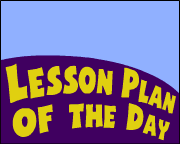
Subjects
- Arts & Humanities
—Language Arts
Grade
- K-2
- 3-5
- 6-8
Brief Description
Hunt for the classmate whose definition card leads to the same word as yours.
Brief Description
Students
- play a game to improve vocabulary and word meaning skills.
Keywords
word meanings, definition, game, match, meanings, noun, verb
Materials Needed
- word meaning cards (see instructions and card suggestions below for all grades)
Lesson Plan
In this lesson each student will have a card on which a word’s meaning is written. The object of the game is for each student to identify the word that goes with the meaning on his/her card; then the student must find the classmate who holds a card that has another meaning for the same word.
Before the Lesson
Before the lesson you will need to create enough pairs of word-meaning cards (3- x 5-inch cards work great) so that
each student will have one card; be sure that each student’s card has a companion card on which is written a different
definition of the same word. For example, the two word-meaning cards below both refer to the same word — beat.
To defeat someone in a game on contest.
The regular rhythm of a piece of music.
Create in advance enough cards so that —
- each student will have a single card and
- each card has a companion card with a different definition of the same word.
Below are 45 examples of word-meaning pairs that you might use. We have provided
- 15 pairs of word-meaning cards that we feel might be appropriate for a primary-level (grades 2 and 3) game;
- 15 cards that would be appropriate for an intermediate-level (grades 4-6) game; and
- 15 cards that would be appropriate for a middle-school level (grades 6-8) game.
Of course, you should feel free to select the word-meaning cards that you feel are most appropriate for your students. You might begin by introducing the game at a level below that of your students. Once students understand the game, you can present the more grade-appropriate or challenging cards.
The Game
When you are set to play the game, give each student a card with a word meaning written on it. The students wander the room searching for the classmate who holds the card that has on it a different meaning for the same word. The rules of the game are flexible. You might
- provide a set amount of time. If a student finds the classmate who has the matching card, they bring their cards to the teacher and, if they are correct, the teacher scores a point for each student.
- collect the cards and redistribute them and play another round, and another
- make the game a little more difficult by playing it in silence.
Game Card Suggestions
These are only suggestions; feel free to mix and match from all groups to compile your set of cards. In addition to the 15 pairs of meanings at each level, we have provided 20 additional grade-appropriate words for which you might create cards.
Primary-Level Word Meaning Cards (Grades 2-3)
To defeat someone in a game or contest. (beat)
The regular rhythm of a piece of music. (beat)
The top part of a person’s body. (head)
To move toward something. (head)
A piece of paper telling how much you owe. (bill)
The beak of a bird. (bill)
Not weighing very much. (light)
To start a candle or campfire. (light)
The money you get back when you pay for something. (change)
To become different or make different. (change)
A layer of paint. (coat)
A piece of clothing worn to keep you warm. (coat)
A set of playing cards. (deck)
The floor of a boat or ship. (deck)
To use one’s car battery to start another car. (jump)
To leap in the air. (jump)
Scraps of paper or other garbage left behind. (litter)
A group of kittens or puppies. (litter)
The season between summer and winter. (fall)
To drop down to the ground. (fall)
A piece of paper used to pay for things at the store. (check)
To look at something to make sure it’s OK. (check)
The part of Earth’s surface not covered by water. (land)
To come down safely, as a plane does at the airport. (land)
A measure of length equal to 12 inches. (foot)
The part of the body at the end of a leg. (foot)
A person who gets excited about a favorite team or a singing group. (fan)
A machine used to blow cool air. (fan)
A plaster covering for a broken arm or leg. (cast)
To throw your fishing line into the water. (cast)
More words: board, order, safe, ship, tick, park, play, punch, tie, part, rock, seal, sign, spring, wash, watch, sink, school, wave, squash
Intermediate-Level Word Meaning Cards (Grades 4-5)
A knot of ribbon placed on a gift package. (bow)
A curved piece of wood with stretched string, used to shoot arrows. (bow)
To give up eating food for a period of time. (fast)
To move quickly, or in a hurry. (fast)
To ask for something in a restaurant. (order)
To arrange in sequence, alphabetically or numerically. (order)
A piece of material placed over a hole in order to mend it. (patch)
A covering for the eye, it might be worn after surgery. (patch)
A coin worth 25 cents. (quarter)
One of four equal periods in a basketball or football game. (quarter)
To send something a long distance by truck or train. (ship)
A large boat that travels over deep water. (ship)
To stumble over, or fall. (trip)
A journey to a far-off place. (trip)
To collect money for a cause or charity. (raise)
To lift up something. (raise)
To throw someone to the ground in football. (tackle)
The equipment needed for fishing. (tackle)
A wading bird with long legs and a long neck and bill. (crane)
A long-armed machine used to lift heavy objects. (crane)
A mixture used to make cakes or other baked goods. (batter)
In baseball, the player whose turn it is to hit. (batter)
To make a first, rough copy of a story, report, or letter. (draft)
A flow of cold air. (draft)
To move along by turning over and over. (roll)
A small round piece of bread, like a bun. (roll)
A person who listens and makes a decision in a court case. (judge)
To decide who is a winner of a competition. (judge)
A machine for printing. (press)
To push firmly. (press)
More words: odd, page, pound, space, case, dress, model, mine, grade, root, train, will, point, pipe, pack, round, shake, spot, time
Middle-School Word Meaning Cards (Grades 6-8)
To move forward, to make progress. (advance)
To lend money against a person’s paycheck or allowance. (advance)
To enter a room rudely or abruptly. (barge)
A flat-bottom boat for transporting goods on a shallow river. (barge)
Happening now, or up-to-date. (current)
The movement of water in the ocean or a river. (current)
Seldom seen or found. (rare)
Meat that is very lightly cooked. (rare)
To put something into something else. (stuff)
Useless or worthless things, junk. (stuff)
A person in charge. (head)
To move toward something. (head)
A chart that lists fact and figures, usually in columns. (table)
A flat-topped piece of furniture on legs. (table)
To come at the end, after everything else. (last)
To go on for a particular length of time. (last)
The flat area of your head above the cheek, in front of the ear. (temple)
A building used for worship. (temple)
To copy a picture by following lines seen through a thin sheet of paper. (trace)
A sign that something has happened, or that someone has been somewhere. (trace)
To defeat unexpectedly, as in an unexpected win in football. (upset)
To make someone nervous or worried. (upset)
A set of matching clothes. (suit)
One of four sets of playing cards; diamonds and clubs, for example. (suit)
To squeeze or wedge something into a tight space. (jam)
A situation in which things, people, or traffic cannot move. (jam)
Flat and smooth, as in the surface of a table. (level)
To flatten, as a tornado might. (level)
A device used to warn someone of danger. (alarm)
To make someone fear that something bad might happen. (alarm)
A person who is dull, uninteresting. (bore)
To make a hole in something with a drill. (bore)
To touch a surface gently with something soft. (dab)
A little bit, as in a little bit of butter. (dab)
More words: foil, inflate, jar, master, pride, scale, stagger, string, credit, frame, harbor, interest, lock, key, express, cure, practice, panel, right, address
Assessment
Create a follow-up matching activity that reviews some of the words presented above or presents new ones. Have students match each word with the definition provided.
Lesson Plan Source
EducationWorld.com
Submitted By
Gary Hopkins
National Standards
LANGUAGE ARTS: English
GRADES K — 12
NL-ENG.K-12.3 Evaluation Strategies
NL-ENG.K-12.6 Applying Knowledge
NL-ENG.K-12.12 Applying Language Skills
See more Lesson Plans of the Day in our Lesson Plan of the Day Archive.
(There you can search for lessons by subject too.)
For additional language arts/reading lesson plans, see these Education World resources:
- Lesson Planning: Language Arts
- Language and Literature Subject Center
- Teacher-Submitted Lesson Plans: Arts & Humanities
- News for Kids
- The Reading Room
- Writing Bug
- Every-Day Edits
- Work Sheets from Teacher Created Materials: Language Arts
Education World®
Copyright© 2006 Education World
02/27/2006









![Meaning and Sound-formare not identical
different
EX. dove - [dΛv]... Meaning and Sound-formare not identical
different
EX. dove - [dΛv]...](https://documents.infourok.ru/2d0c9b9d-1c12-4da2-8c1e-80496902c301/slide_10.jpg)













































